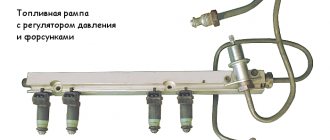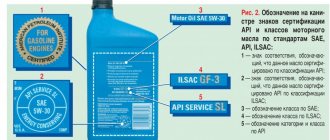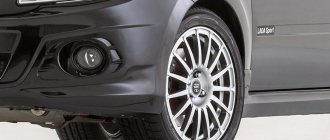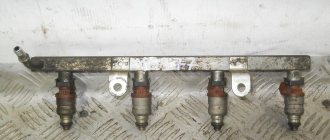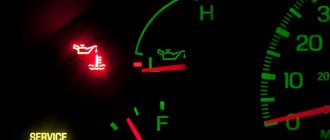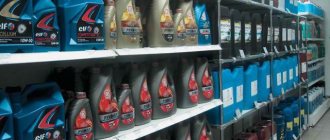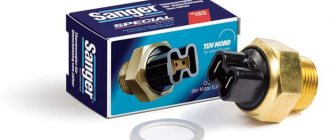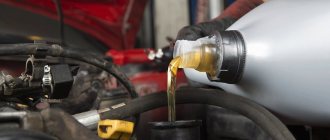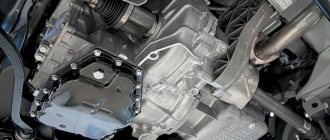How important is it to maintain normal blood pressure?
Ensuring optimal vehicle stability on the road is the main task of tires. The safety of the driver and passengers depends on the stability of the vehicle on the road surface. At the optimal pressure level at the point of contact of the tire with the road surface, the load is distributed evenly. Hence all the ensuing consequences - adequate consumption, uniform tire wear, good handling.
It is necessary to measure the parameter on cold tires in the garage just before leaving. You can measure tire pressure using a special device - a pressure gauge.
R13 tires are most often installed on the VAZ-2114 car. This is considered a kind of standard. Although, the car can be equipped with wheels with a radius from R13 to R16.
How does the type of tire affect the pressure?
You should know that the tire diameter does not affect the pressure indicators - for tires r13, r14 and r15 it will be the same. The degree of load on the wheels plays a role here.
It should be borne in mind that if there is a temperature change, for example, if you drive from a warm place to a cold one, the tire pressure may become lower. In summer they should have about 1.9 atmospheres at average load. If the car is fully loaded, the tires should be inflated to 2.1 atmospheres.
What pressure should be in winter tires r13 VAZ-2114
The task of every driver is to maintain an optimal pressure level. There is an opinion among car enthusiasts that the pressure should be different in the cold and warm seasons. There is some truth in this, but the difference should not be significant.
| Wheel size | Recommended standard air pressure in wheels, kgf/cm2 |
| 175/70 R13 | 1,9 |
| 175/65 R13 | 1,9 |
| 175/65 R14 | 2,0 |
| 185/60 R14 | 2,0 |
Tire pressure rises quickly in summer, so it is best to deflate excess air when the air temperature exceeds 25 degrees Celsius.
In winter, this figure drops faster. Such indicators are typical for a passenger car with an empty luggage compartment. In any case, the recommended value is indicated in the vehicle’s operating book. It is necessary to adhere to the standard certified by the manufacturer at any time of the year. In general, we can say that in winter the wheels should be inflated 0.2 atmospheres more than in summer.
What should the pressure be in winter?
Recommended value in winter
The recommended tire pressure for the VAZ-2110 should be indicated on a special sticker. As a rule, this information is indicated on the car body on the driver's door, less often on the glove compartment door.
In winter, it is recommended to lower the wheels (that is, you need to install tires with a small minimum diameter). However, some experts argue that the degree of their pumping does not depend on the season. By installing small tires, ideal stability, smoothness and safety are ensured when driving on ice.
For the VAZ-2110 model, the manufacturer recommends maintaining tire pressure at 1.9 kgf/cm³ for front and rear wheels of size 175/70 R13 and 2.0 kgf/cm³ for 175/85 R14.
According to some drivers, in winter the pressure in the wheels of a VAZ-2112 vehicle should be less than in summer. This was confirmed by experts when this indicator in tires, especially in winter, decreased significantly.
You might be interested in this About tires for the Ural 4320 - their size
If this indicator decreases significantly, then deterioration in controllability can be expected. Accordingly, fuel consumption increases and service life decreases by approximately 30%. With increased tire pressure in winter, a passenger car loses stability.
Important!
When choosing the optimal tire pressure for the VAZ-2110 2021, it is worth remembering some of the manufacturer’s recommendations. For example, a car with underinflated tires can drive much smoother on rough roads. Unfortunately, in this case, rubber wear increases.
What are the dangers of deviation from the norm?
In summer, due to high temperatures, the contact area between rubber and the road surface is significantly reduced. The pressure rises, and this is already an alarm bell for the driver. After all, rubber loses its elasticity and does not resist impact loads.
Plus, if you overdo it and overinflate the wheels, you can experience the following troubles while driving a car:
- Wear on the car's chassis increases, the ride becomes uncomfortable, and all the imperfections in the road surface are felt.
- The contact area of the tires with the road is reduced - the braking distance increases.
- During high-speed driving, rubber may rupture, which in itself is not safe.
If, on the contrary, the tires are poorly inflated, the following consequences will emerge:
see also
- Vehicle controllability will deteriorate significantly.
- The amount of fuel consumed will increase.
- On snowy or wet asphalt, the car will have a tendency to skid.
- The vehicle's power will noticeably decrease.
Experienced motorists can visually determine whether tire pressure is normal or not. Beginner car enthusiasts are recommended to take measurements at least once a week. It is enough to arm yourself with a pressure gauge, reset its readings to zero, connect the fitting of the device to the nipple and start applying pressure. Then record the readings of the instrument needle.
Seasonal change in tire pressure
As the ambient temperature changes, the pressure in car tires also changes, due to the heating or cooling of the air inside the wheels.
Tire pressure in summer
First of all, you need to take into account that regardless of the time of year, the pressure in the VAZ 2107 tires should remain the same. In summer, it is recommended to check the pressure more often than in winter, especially when driving along the highway at high speed (every 300–400 km). The fact is that in hot weather the tires become very hot under the influence of the sun, maneuvers, and high-speed driving. All these factors lead to an increase in pressure inside the wheels. If this parameter significantly exceeds the norm, the tire may explode. To check the pressure correctly in the summer, you need to wait until the rubber has completely cooled, and it cools down slowly. On long trips, as a rule, you have to lower the wheels rather than pump them up.
Tire pressure in winter
With the arrival of cold weather, the pressure in car tires decreases noticeably. If at a temperature of +20˚С this figure was 2 bar, then at 0˚С the pressure will drop to 1.8 bar. It must be taken into account that this parameter should be checked and brought to normal in the conditions in which the car is operated. If in winter the car is stored in a warm garage or box, then the pressure must be increased by an average of 0.2 bar in order to compensate for the temperature difference.
Since softer tires (winter) are installed on the car in winter, it is necessary to prevent a decrease in pressure, because a low value of the parameter will lead to rapid wear and failure of the tires. In addition, the likelihood that the wheels may burst on the road increases. There is an opinion among car enthusiasts that on slippery roads it is necessary to reduce the tire pressure to increase the traction properties of the wheels. However, if you look at it, this judgment is fundamentally wrong. This is explained by the fact that as pressure decreases, the area of the contact patch with the road surface increases, as a result of which the grip characteristics of tires on slippery roads deteriorate.
It is also not recommended to underestimate the pressure in winter for the reason that when hitting any unevenness, the chances of damaging the wheel rims increase, since the tires will not be able to provide sufficient rigidity due to the loss of their shock-absorbing properties.
Video: how to check tire pressure
How to measure car tire pressure in winter and summer
To measure the pressure in a car's tires, a special device called a pressure gauge . Whether it is mechanical or electronic does not matter, their function is the same. Modern cars are equipped with an automatic pressure control system, which displays readings on the dashboard, eliminating the need to use a hand-held device.
Do not also forget that the pressure gauge also has an error, it is indicated on the device. Therefore, it is necessary to take it into account when measuring.
It is necessary to check the tire pressure of a car with a pressure gauge in winter only on cold tires. Those. before heading out on the road.
You can buy a pressure gauge at any auto store. If this is not possible, then you can check the inflation level of your car’s wheels at any tire service station or gas station.
How often should you check tire pressure in winter?
It is necessary to check the pressure in the tires of a passenger car at least 1-2 times a week in . And you need to take this seriously, especially with sudden and constant temperature changes.
It is best to check pressure on cold tires . It is never a bad idea to check if there is a significant or sudden change in temperature.
- As the air temperature rises, the tire pressure will increase;
- If it decreases, it will decrease.
This is why it is so important to systematically monitor and adjust the pressure in your car tires to the optimal level in winter.
Table: VAZ 2107 tire pressure depending on size and time of year
| Wheel size | Tire pressure in summer (kgf/cm²) | Tire pressure in winter (kgf/cm²) | ||
| Front axle | Rear axle | Front axle | Rear axle | |
| 165/80R13 | 1,6 | 1,9 | 1,7 | 2,1 |
| 175/70R13 | 1,7 | 2,0 | 1,7 | 2,2 |
The table shows data for a car that is stored in a warm garage. Therefore, there is a difference between summer and winter pressure readings of 0.1–0.2 atmospheres, which makes it possible to compensate for the difference in indoor and outdoor temperatures.
The pressure in car tires depends both on the car itself and on the type of tires. This parameter is set from the factory and these values should be adhered to. In this way, you will be able to avoid possible troubles and protect yourself and other road users.
The vehicle tire pressure must be checked regularly and maintained at the values recommended by the vehicle manufacturer. Deviation from the established norm can lead to a variety of consequences, and most importantly, traffic safety depends on it. What pressure should be in the tires and what it affects, we’ll look at it in a little more detail in this article.
Measuring tire pressure with a pressure gauge
Table of tire pressures for different models of domestic cars by make and wheel size
Table for measuring the indicator in wheels for different models of domestic cars.
The unit of measurement can be determined only after studying the basic designation. For example, BAR is a popular option for reflecting an indicator. This designation refers to the technical atmosphere. Using a special tool, the indicator is measured in bars.
On a note!
This parameter shows the ratio of pounds per square inch. The conversion of the indicator to more familiar atmospheres (bars) is carried out by dividing the resulting replacement by 14.5 (there is no need for a more accurate coefficient, because the difference, as a rule, indicates the error of the device itself).
There are other factors that influence the parameter when measuring pressure in overinflated or uninflated tires.
These important factors include the following:
- wheel diameter;
- car brand;
- type of rubber used;
- road surface;
- driving style.
What instruments are used to measure this indicator?
Instruments used to measure the indicator
To check this indicator, you need to use a special device - a pressure gauge.
This accessory is divided into three categories:
- pointer (works with a special spring);
- mechanical (based on a cylindrical spring);
- electronic is considered a more modern device on which a liquid crystal screen is installed.
The most popular is the first dial pressure gauge.
The main advantage of this development is reliability. In addition, every car owner can afford such a device due to its low cost.
Experts also highlight a shortcoming of the device. There is a possibility that it will immediately fail in the event of mechanical damage. Usually the spring breaks quite quickly, especially with a sharp impact. The second type of device is more effective - a mechanical pressure gauge. It is made in the form of a special “handle”.
Important!
The main basis of this device is a special cylindrical spring. To get an accurate answer, you can use an electronic pressure gauge. Manufacturers claim that the electronic device displays reliable information with an error of no more than 0.05 bar (atmospheres).
Many car enthusiasts, despite the manufacturer’s recommendations, are interested in what the tire pressure should be. This is important to know for the safety of tires and road safety. Improper operation of the vehicle will lead to wear and damage to the tires. If the tire pressure is within normal limits, then a comfortable/safe ride is ensured. In addition, other positive qualities should be taken into account:
- the car is easy to drive;
- fuel is consumed in a minimum amount;
- tires wear out only after a few years.
You might be interested in this About tires for Achilles cars
To make it easier to determine the norm, a table of car tire pressures will be presented below.
Calculation table
Speed indices T - up to 190 km/h, H - up to 210 km/h.
Load capacity indices: 82-475 kg.
Rim offset (ET) is the distance from the mating plane of the disc to the middle of the rim.
WHAT IS THE RISK OF DEVIATION FROM THE SET PARAMETERS
Front-wheel drive cars of the Volzhsky Automobile Plant, such as the VAZ 2110, VAZ 2114 and VAZ 2115, can be equipped with wheels with a radius of R13, R14, R15 and R16, but the standard cars are equipped only with rims and tires of the 13th and 14th radius. The optimal tire pressure depends primarily on the load and weight of the vehicle; much also depends on road conditions and ambient temperature.
If the wheels are poorly inflated, then:
- The tire tread will wear out faster;
- It will become more difficult to control the car and turn the steering wheel harder;
- Fuel consumption will increase, and the more flat the tires, the more noticeable the gasoline consumption;
- The car will become prone to skidding, especially on wet and snowy roads, and stability will be lost;
- The power of the car will decrease as the resistance to movement will increase.
INFLUENCE OF WEATHER CONDITIONS AND ROAD FACTORS
The pressure in VAZ tires in summer should, in principle, be the same as in winter. But in practice in winter it is made a little lower for a number of reasons:
- Slightly lower tires allow you to better control the car on slippery roads, it becomes more stable;
- The suspension is made softer, and road unevenness is less felt;
- The braking distance becomes shorter, reducing the likelihood of an emergency.
It is necessary to take into account the fact that after a temperature change (after leaving a warm garage on a frosty street), the pressure in the R14 tires will become less due to physical factors. Therefore, you should check it before you hit the road and, if necessary, pump up the tires. Also, when it gets warmer after winter, pressure measurements should be taken.
The pressure in R13 tires in summer is usually maintained at 1.9 atm, but this level is designed for an average vehicle load (two or three people in the cabin). If the car is fully loaded, then the pressure should be increased on the front axle to 2.0-2.1 atm., on the rear axle to 2.3-2.4 atm. The spare wheel is inflated to 2.3 atm.
Russian roads are not of good quality, and therefore many car owners deliberately lower the tire pressure somewhat so that all the unevenness of the road surface is not so noticeably felt when driving. Typically, in summer the wheels are lowered by 5-10%, and in winter by 10-15% of the norm. On flat roads you can stick to the factory standard.
For example, a table of car tire pressures:
For example, a table of car tire pressures
LARGER DIAMETER WHEELS
From the factory, the installation of wheels with diameters R15 and R16 is not provided, but some car enthusiasts, in pursuit of fashion and improved technical characteristics, install them on their VAZs. And accordingly, you need to know what the pressure should be in the R15 tires, and what the pressure should be in the R16 tires. It all depends on the workload of the VAZ model. With an average vehicle load, the wheels are inflated to 2 kgf/cm²; on a loaded car, it is better to inflate them to 2.2 kgf/cm². And if there is a lot of heavy luggage in the trunk, then the rear tires are pumped up by another 0.2 kgf/cm². It turns out that the pressure in R14 tires is approximately the same as the pressure in R15 and R16 tires (for VAZ 2110-2115 models).
Dependence of pressure characteristics on wheel size
Naturally, the pressure of different tire sizes will be different. Domestic classic cars with size R13 have the lowest performance. Modern Russian models and foreign cars move on R15 wheels, in which the rating exceeds 2 atm. These parameters do not change either in winter or summer, except in extreme cases when the pumping level is changed to drive along a problem section of the road. The summary table shows more precise figures of what pressure should be:
| Wheel size | Car make and model | Front wheel pressure, atm | Rear wheel pressure, atm |
| 155/80/ R13, 165/80/ R13, 175/70/ R13, 185/60/ R13 | VAZ 2101-2107 | 1,6-1,7 | 1,9-2,1 |
| 155/80/ R13, 165/70/ R13, 175/70/ R13, 185/60/ R13 | VAZ 2108-2115 | 1,9 | 1,9 |
| 175/65/ R14, 175/70/ R14, 185/60/ R14, 185/70/ R14 | Kalina, Priora, Granta, Renault Logan | 2,0-2,2 | 2,0-2,2 |
| 185/60/ R15, 185/65/ R15, 195/50/ R15…195/70/ R15, 205/65/ R15, 225/79/ R15, | Vesta, Largus, Ford Focus, Nissan Almera, Toyota Avensis, Corolla, Mercedes C-Class, BMW 1-3 series, Audi A4-A7 | 2,3-2,8 | 2,3-2,8 |
When the car is fully loaded, the pressure should be increased to maximum values. More precise recommendations from manufacturers are indicated on the plates on the B-pillar on the driver's door side. When installing wheels of non-standard sizes on a car, it is necessary to adjust the inflation according to the parameters of the new tires. The table below will help you determine what tire pressure to set.
METHODS OF MEASUREMENT
How to measure the tire pressure of VAZ cars? The measurement can be made using a special dial pressure gauge, but it should be noted that they may have an error of 0.2 atm. The pressure gauge can be either a separate device or as part of a wheel inflation pump.
We measure the pressure very simply:
- Reset the pressure gauge readings to zero;
- Remove the cap from the wheel spool (if there is one);
- Place the pressure gauge fitting on the nipple and press;
- We look at the arrow reading on the device.
It is recommended to take measurements at least once a month if the machine is used regularly. It is recommended to check tire inflation before leaving the garage after a long stay.
Pressure may increase when tires heat up. This often happens if the driver prefers a dynamic driving style with frequent and sharp braking. Therefore, measurements are taken on the car before the trip, when the wheels have not yet warmed up.

